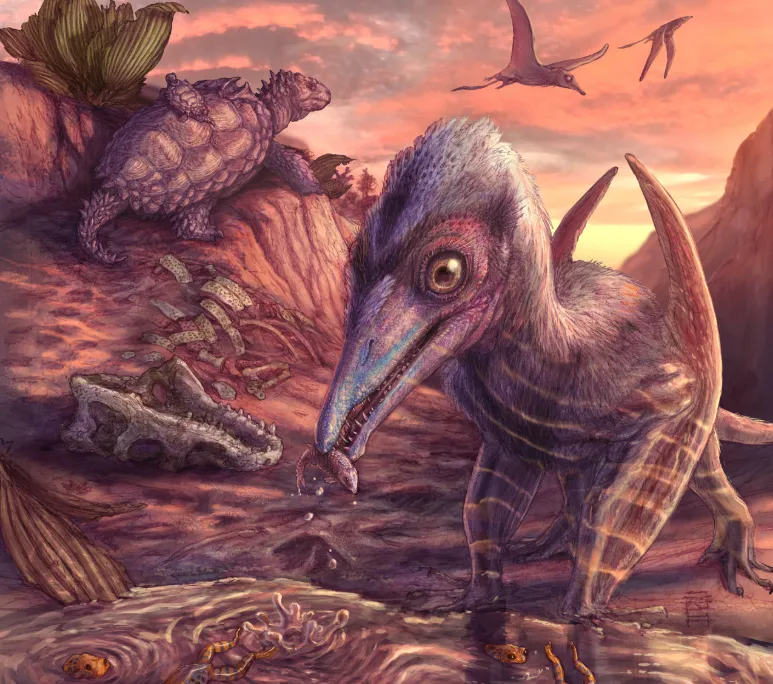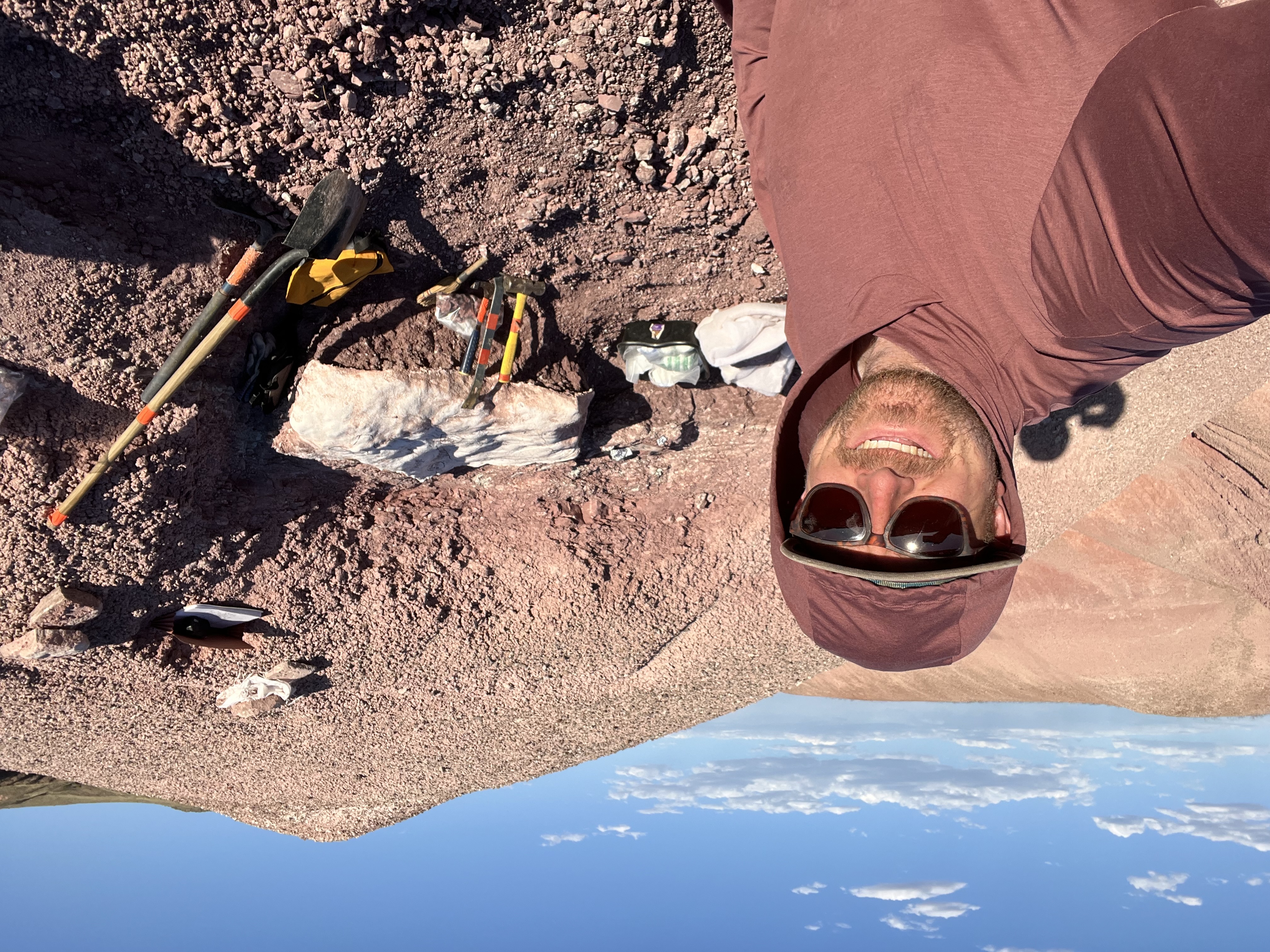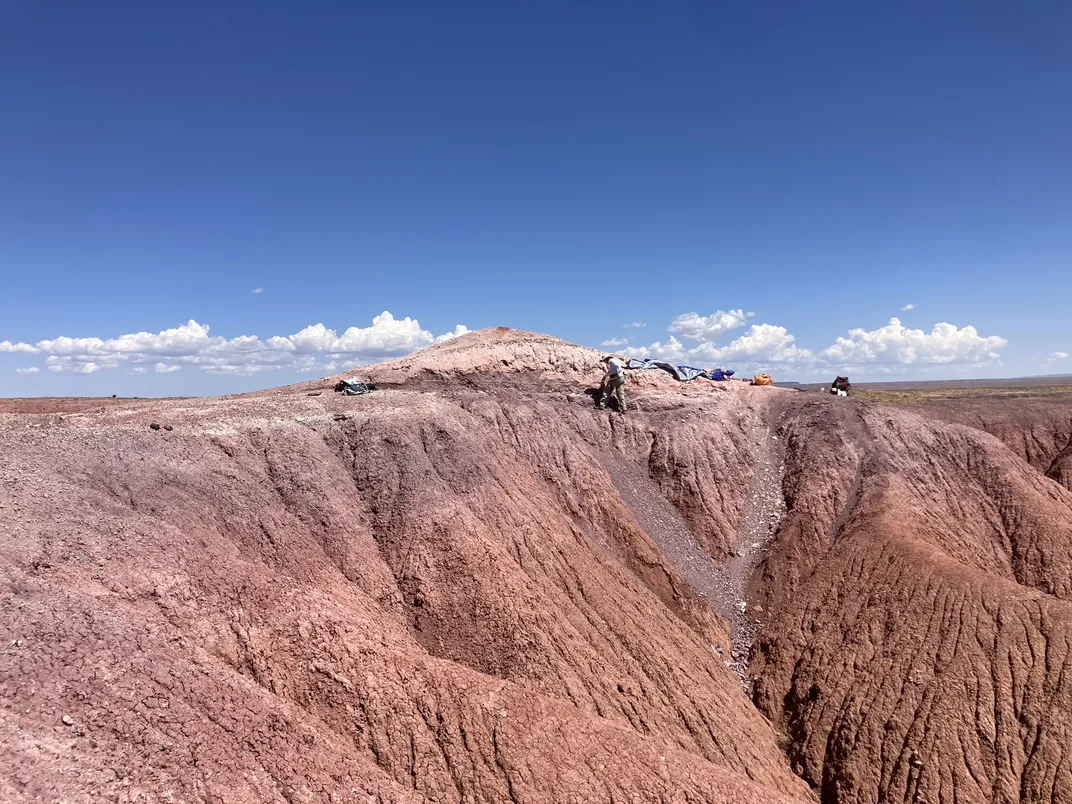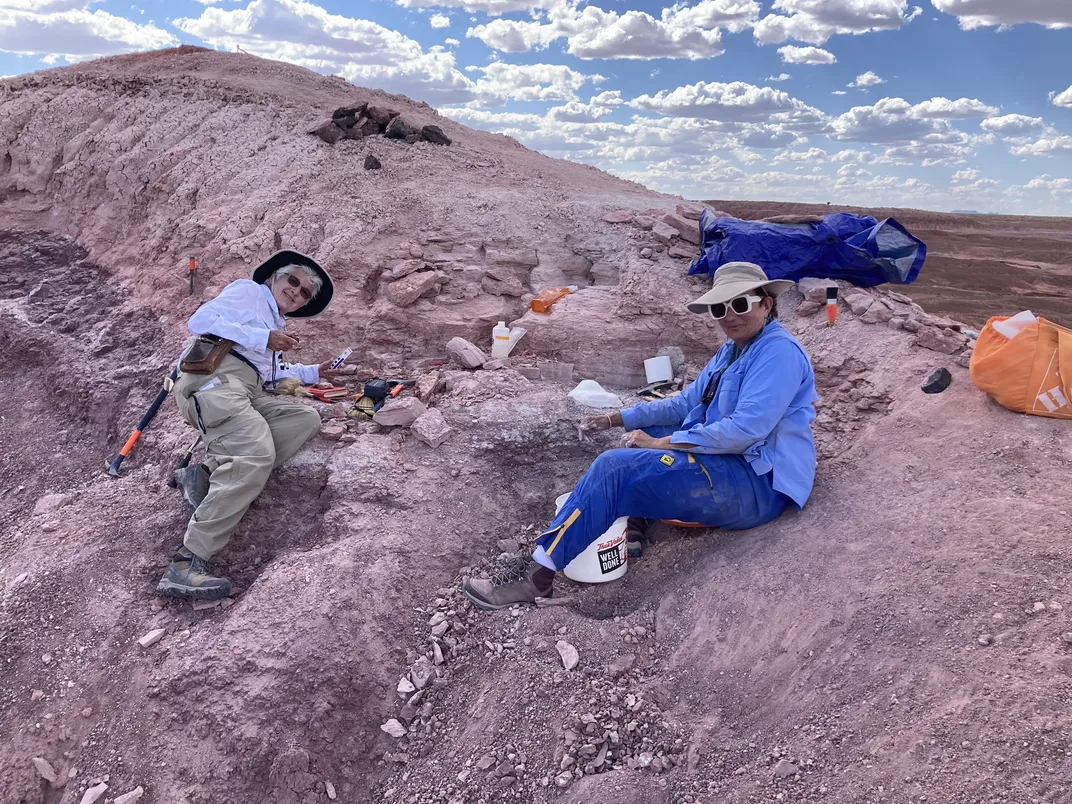A Bone Bed From the Dawn of the Dinosaurs Has Revealed the Oldest Known Pterosaur Found in North America
Fossil surprises abound in new research that unearths the history of the Triassic Period

The painted desert of Arizona’s Petrified Forest National Park is a fossil wonderland. Scattered through the sunbeaten rock are rainbow-colored trunks of prehistoric conifers, the crumbling bones of crocodile-like reptiles that lurked in ancient streams and the remnants of some of North America’s oldest dinosaurs. Together the incredible wealth of fossil sites documents how life changed through the Triassic Period, between 201 million and 252 million years ago, in the Four Corners region. Now, in a new study, a bone bed from near the end of the period has revealed a detailed look at the life that was thriving in streams and channels around 209 million years ago, including the oldest pterosaur yet found on the continent.
Paleontologists know the bone bed as PFV 393. The late fossil preparator Bill Amaral found the site in 2011 on a field trip to unearth new fossils that might provide information about the origins of organisms we see around us today, such as reptiles and mammals. The fossils were too small to uncover in the field, says Smithsonian National Museum of Natural History paleontologist and study co-author Ben Kligman. So, the paleontology field team enclosed sections of the bone bed in plaster, called “blind jackets,” that would keep the fossils inside safe until they could be uncovered with more delicate methods back at the museum. The fossils within revealed a Triassic ecosystem in detail.
Described by Kligman and colleagues in Proceedings of the National Academy of Sciences, the accumulation of 1,468 fossils includes a range of Triassic organisms both familiar and strange. Scaly fish swam through the prehistoric channels as early frogs kicked through the shallows. Crocodile-like reptiles called phytosaurs watched the shoreline for prey; the dragon-like reptile Vancleavea foraged for small critters; and armadillo-like crocodile relatives called aetosaurs munched on plants and bugs along the banks. And above their heads flew the early pterosaur Eotephradactylus.
Fun fact: What is a pterosaur?
Pterosaurs were flying reptiles related to dinosaurs. They originated during the Triassic Period, about 235 million years ago, and went extinct 66 million years ago.From the hundreds upon hundreds of fossils prepared from PFV 393, only three Eotephradactylus fossils have been found so far. The small collection includes a lower jawbone with teeth, an isolated tooth and a finger bone. Nevertheless, the bones show the subtle anatomical hallmarks of pterosaurs. The reptiles originated earlier in the Triassic, splitting off from their common ancestor with dinosaurs, and began to evolve the ability to fly. While feathery, pterosaurs took to the air thanks to hollow bones and leathery wings made of skin stretched between the body and an elongated fourth finger.
Pterosaurs are difficult to find in the fossil record. Their thin, hollow bones were often destroyed before they could be buried and fossilize. “Pterosaurs are cheeky,” says Chinese University of Hong Kong paleontologist Natalia Jagielska, who was not involved in the new study. To become fossils, the flying reptiles would’ve had to be in an environment where there was a chance of being covered before the elements, scavengers or decompositions could destroy the body. “This makes preservation of delicate flying animals in inland environments a rarity,” Jagielska says, and yet somehow Eotephradactylus made it into the fossil record.
The fossils included a clue as to why the pterosaur was found among creatures that lived by streams. While many later pterosaurs had toothless beaks, early pterosaurs like Eotephradactylus were toothy. The teeth from the pterosaur Kligman and colleagues studied were worn down, indicating that the reptile was feeding on relatively hard prey. The small, scaly fish found at PFV 393 seem to be a perfect fit for the tooth wear seen on Eotephradactylus. Scooping up and eating fish kept the pterosaurs coming back to a place where water intermittently flowed, and where sediment could cover bones washed into the channel.

“Our analysis of fossil preservation and deposition in this bone bed suggests that abandoned river channels can act as a low-energy setting where delicate bones of animals like pterosaurs might first get deposited,” Kligman says. Bones that tumbled into the channel were then covered over again when monsoons or heavy rains caused the channel to flow with sediment-laden water. The same pattern repeated over hundreds of years. “This was not a single unfortunate event, but the result of hundreds of years of animals living in and around a channel,” Kligman says.
The pterosaur is not the only remarkable find from the collection of Triassic creatures. While many of the bones are from animals previously found at other sites in Petrified Forest National Park, some are mysterious. A jaw found at the site resembles those of ancient protomammals that were thought to be extinct by the later part of the Triassic. The experts are not sure what the animal was, but it hints at more as-yet-undiscovered species within the park’s rocks.
Taken together, the 16 different vertebrates found at the site indicate how different groups of organisms lived in distinct ecological habitats even during the Triassic. PFV 393 does not contain bones of dinosaurs, predatory crocodiles or other terrestrial creatures found at other sites but instead represents a moist habitat with running water. Even more broadly, the makeup of the organisms at the site demonstrates how different groups of reptiles were moving around the supercontinent Pangea prior to a mass extinction 201 million years ago that ended the Triassic and began the Jurassic.

The pterosaur Eotephradactylus is the oldest pterosaur yet found outside of Europe. The bones indicate how small pterosaurs were expanding to new habitats across Pangaea by 209 million years ago, a broad distribution that almost certainly helped them survive the volcano-driven mass extinction at the end of the period. “Flight is a useful adaptation to have when it comes to survival,” Jagielska says, because “you can traverse huge distances to meet your dietary needs.” Being able to fly and rapidly spread over Pangaea helped pterosaurs diversify into many new forms that gave the group a better chance of long-term survival.
The researchers also highlight turtle fossils found at the site, which can help outline the evolutionary story of the shelled reptiles. Petrified Forest National Park was near the Equator 209 million years ago, and the turtle fossils represent a land-dwelling form with a thin shell and neck spikes. The turtles lived near running channels but were not yet aquatic reptiles at the time.

Previously, a 12-million-year gap loomed between the mass extinction at the end of the Triassic and the closest fossils found in Petrified Forest. Now the gap has been shortened to eight million years, thanks to this new snapshot of life around streams during a time when small, fuzzy dinosaurs ran through forests of towering conifers.
The channels of the time covered and preserved the bones of the creatures that lived in those habitats, everything from fish in the water to flying reptiles above. In fact, Kligman and colleagues propose, such stream deposits in other places might yield essential fossils that further illustrate how the period unfolded through millions of years. Bone by bone, a picture of Triassic life is coming together.

